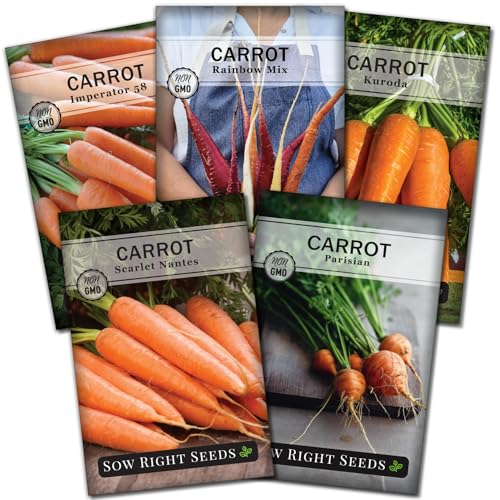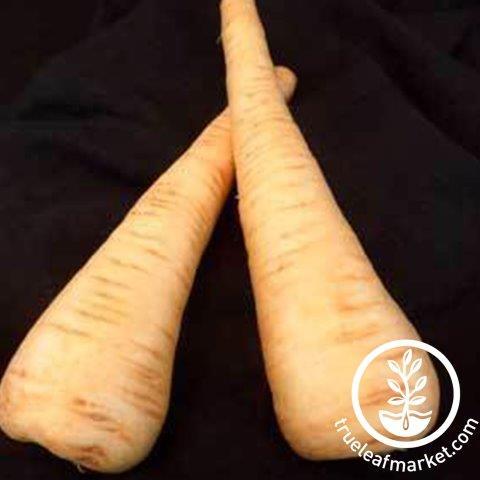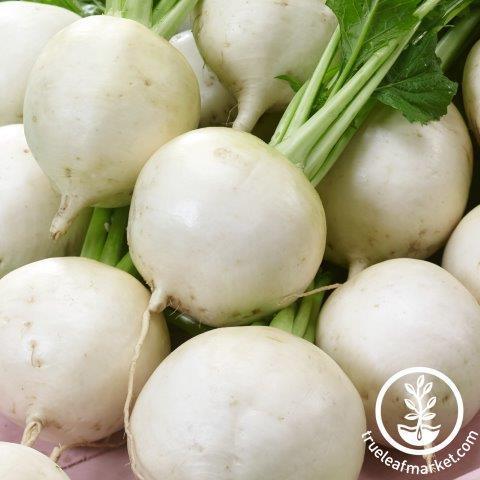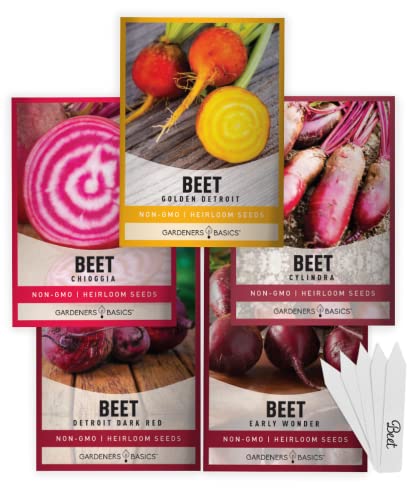Direct sowing vs transplanting – our grow-your-own expert advises which is best, and shares 5 veggies you should always sow directly
Both approaches to sowing vegetables have pros and cons

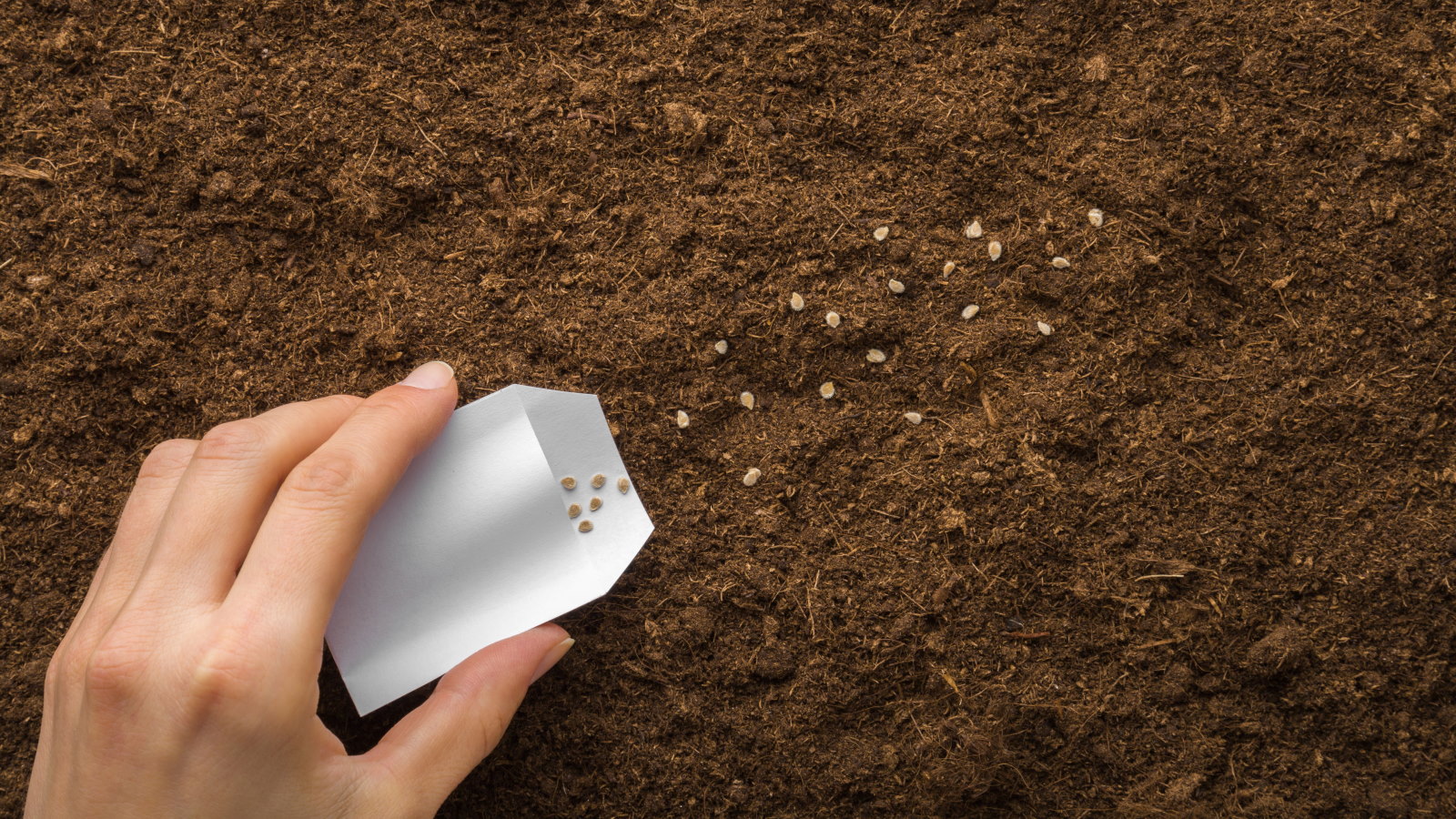
Growing vegetables means making some important decisions. Deciding what, where, and how to grow crops can be key to success and top harvests, which includes whether to direct sow or transplant vegetables.
If you are new to planting vegetables, weighing up direct sowing vs transplanting crops can be confusing. However, I want to help you understand what’s best for your plants. So this guide looks at the difference and reveals which vegetables always need to be sown directly.
I cultivated crops professionally for many years in vegetable gardens, including for a Michelin-star restaurant. I started most crops as transplants, but not all. This was for good reasons, as getting it wrong can impact any potential harvest.
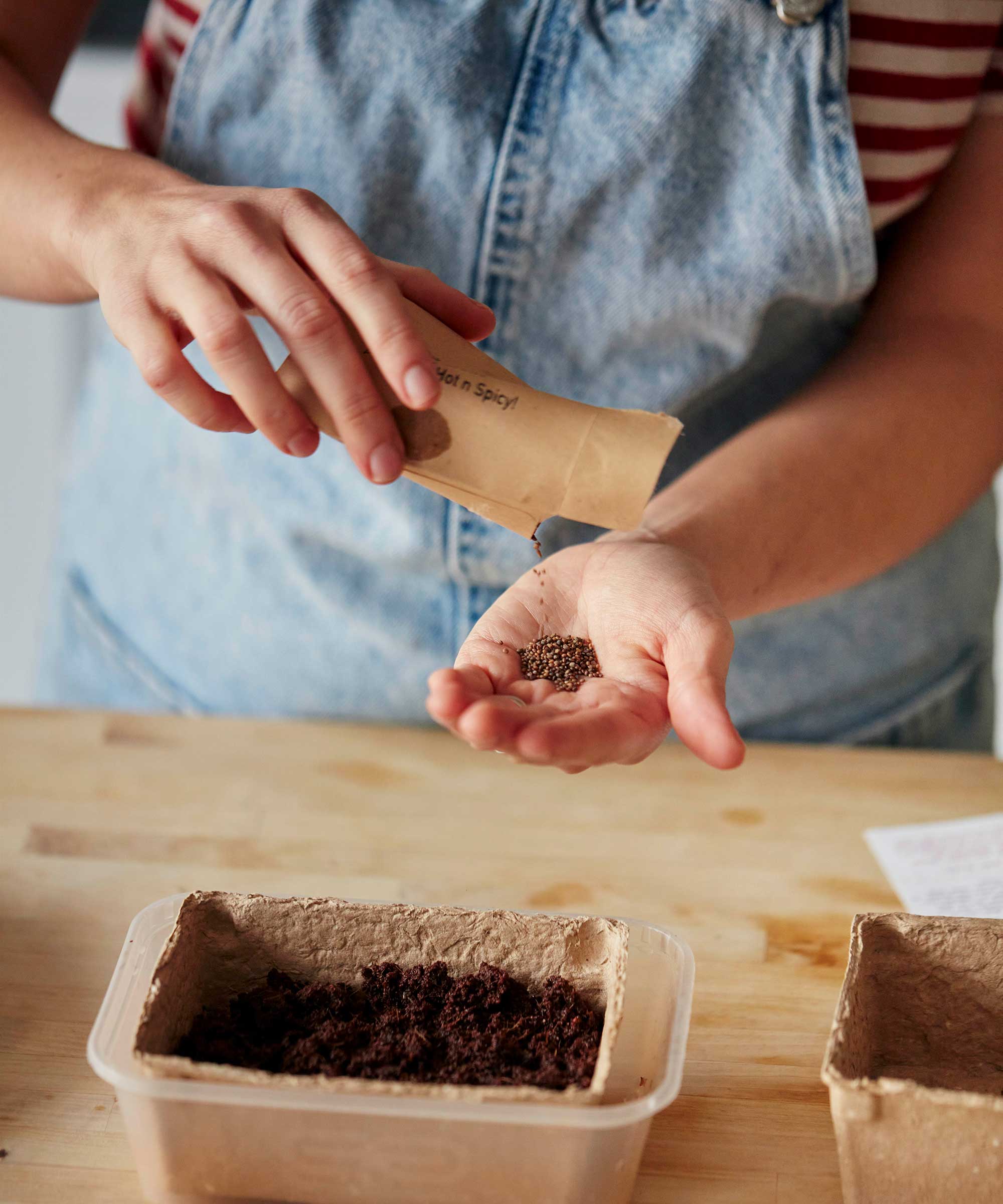
Direct sowing vs transplanting - how to decide
To help you make the best decisions for your crops, I first look at direct sowing vs transplanting, before revealing five crops not to transplant and always sow directly.
What is the difference between direct seeding and transplanting?
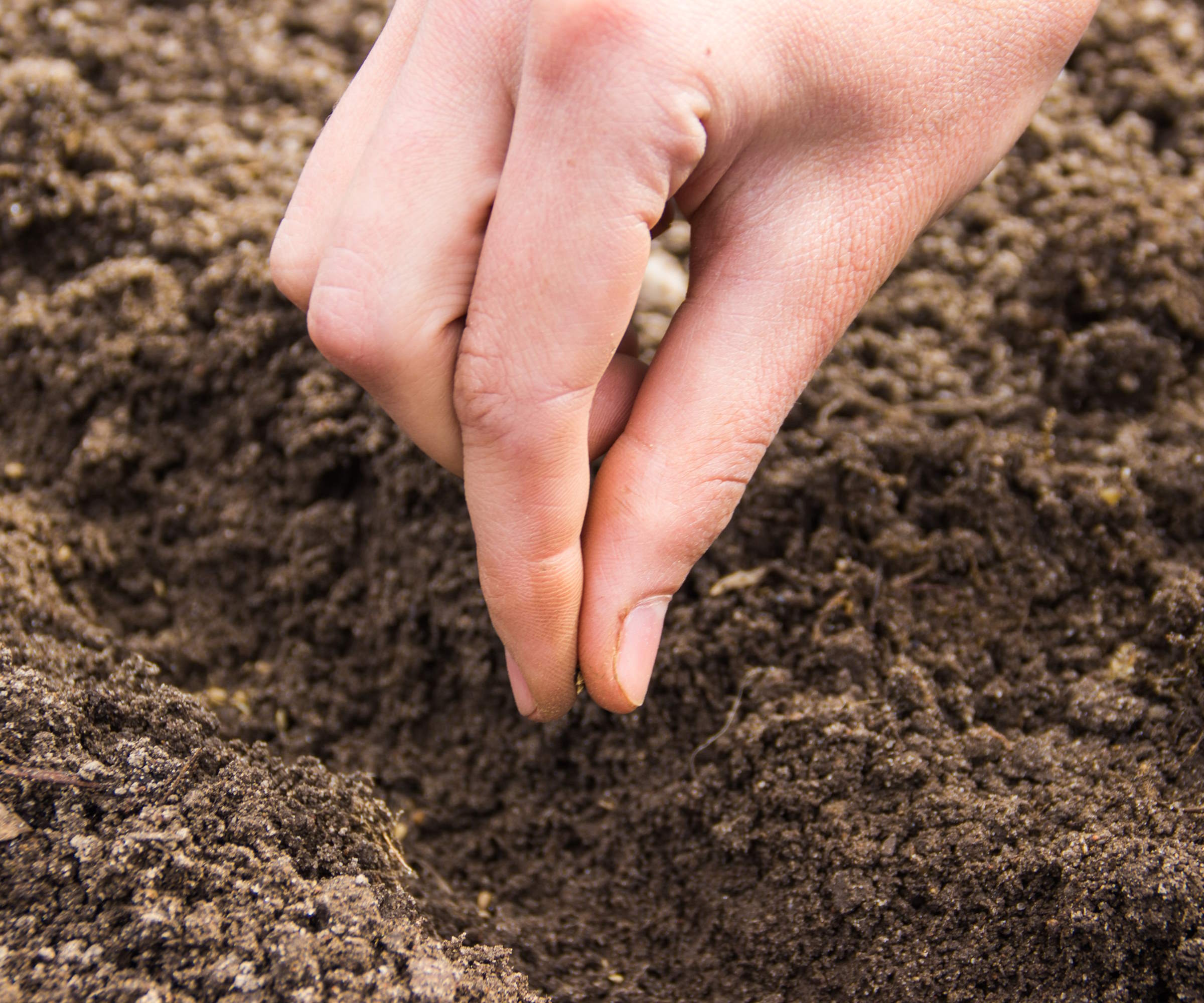
The difference between direct sowing and transplanting is where you sow the seeds.
- When growing transplants, you sow seeds indoors and then transplant the seedlings into the garden a few weeks later when they are large enough to handle.
- Direct sowing means sowing seeds outdoors directly into their growing position.
When choosing between direct sowing vs transplanting, several factors come into play and will influence how you plant your crops.
Direct sowing is easier and quicker, plus you don’t need additional propagation supplies. It does mean waiting until the frosts are over and getting that timing right, as the soil wants to be warm and moist but not too wet.
Design expertise in your inbox – from inspiring decorating ideas and beautiful celebrity homes to practical gardening advice and shopping round-ups.
Direct sowing presents additional risks, though. You rely on the weather, which can pose challenges in spring, and pests like slugs and snails may nibble on the seedlings when they emerge.
Transplanting gives you more control and allows you to start crops earlier indoors in a protected environment, before the last frosts in spring. Plus, the plants are larger and more resilient to pests when the time comes to put them outdoors.
However, you need space, such as a greenhouse or warm windowsill, and more supplies, including compost, pots, and a heated propagator or grow lights (depending on how early you want to start your transplants).
You can buy transplants at garden centers, nurseries, or online to plant into the garden, but these are considerably more expensive than buying and sowing seeds. Some crops, though, are unsuitable for transplanting, and are ones to never buy as seedlings - even if you see them for sale.
5 crops to direct sow and not transplant
I cultivated vegetables in gardens in US hardiness zone 8 and started most plants as transplants. I always weighed up direct sowing vs transplanting when writing the seed sowing schedule for the year, but preferred to opt for the latter wherever possible.
It helped that I was fortunate to have a large greenhouse for starting plants, which allowed me to begin earlier. Additionally, I encountered fewer pest issues when transplanting seedlings outdoors.
Despite the benefits of transplants, there were always five crops I directly sowed outdoors. I have tried growing most of these as transplants before in my career, but always found the best results come from germinating seeds directly in the growing position.
1. Carrots
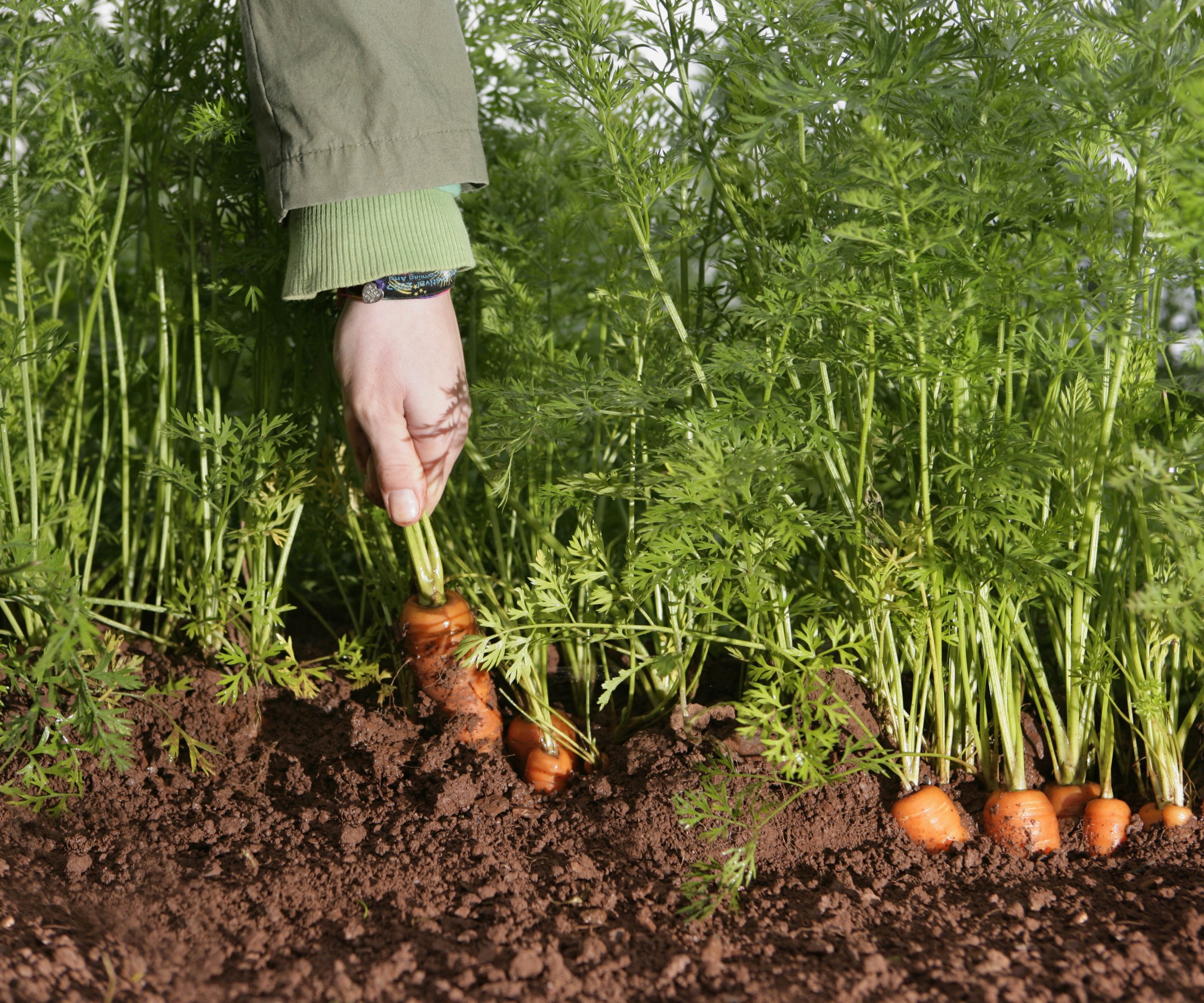
The best way to grow carrots is to direct sow them. I have seen packs of carrot transplants for sale in garden centers and would never advise buying them. It is much better, and cheaper, to buy a pack of carrot seeds and sow them into your kitchen garden - or you can grow carrots in containers and sow seeds straight into the pot.
Plant carrots from early spring until mid-summer. Successional planting every few weeks throughout the growing season is a great way to guarantee yourself a long harvest of carrots.
Sow the seeds outdoors into shallow drills around a half-inch deep, and sow thinly to reduce the amount of thinning involved. Transplanting carrots causes root disturbance that leads to forked or warped roots - not the straight, uniform roots you want to see when you lift carrots.
2. Parsnips
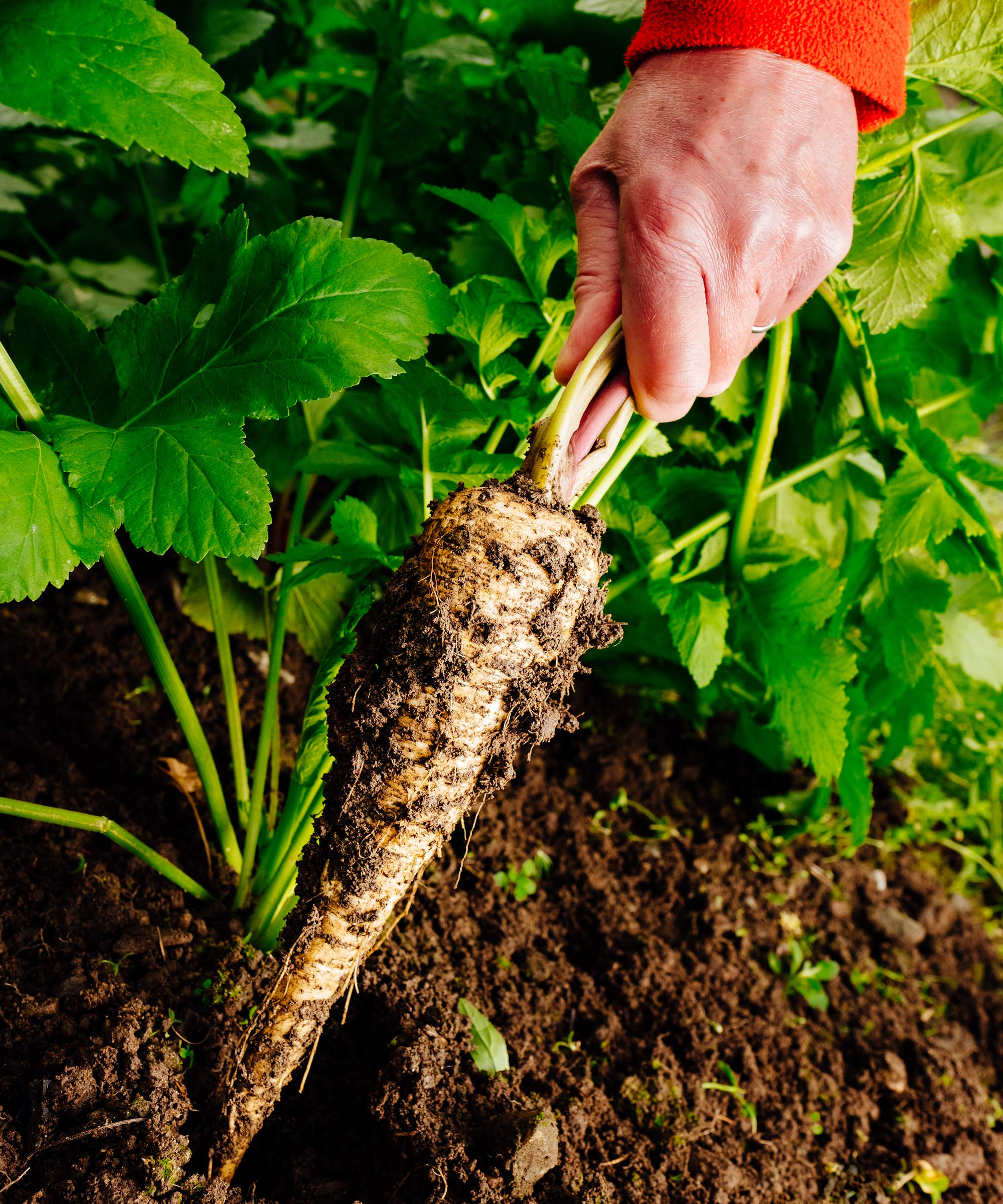
These root vegetables have a long growing season, and there are two secrets to growing parsnips successfully. One is to use fresh seed, as parsnip seeds lose their viability quickly, and the other is to direct sow the seeds.
Transplanting seedlings disturbed the plant’s taproot, which develops quickly. When unsettled, the taproot can distort and result in all manner of weird and wacky-shaped parsnips. Some growers plant parsnips into biodegradable pots, available at Amazon, or toilet roll cardboard tubes, but it is safer to direct sow to guarantee long, tapered parsnip roots.
Sow seeds in early spring - you plant the vegetable in March or April once the soil reaches 50-55˚F. Thinly sow seeds an inch deep into drills or holes in the soil. Cover with a thin layer of soil and keep moist, before thinning seedlings to 6-8 inches apart as they develop. Keep the plant well-watered, and you can start to harvest parsnips come fall.
3. Radishes
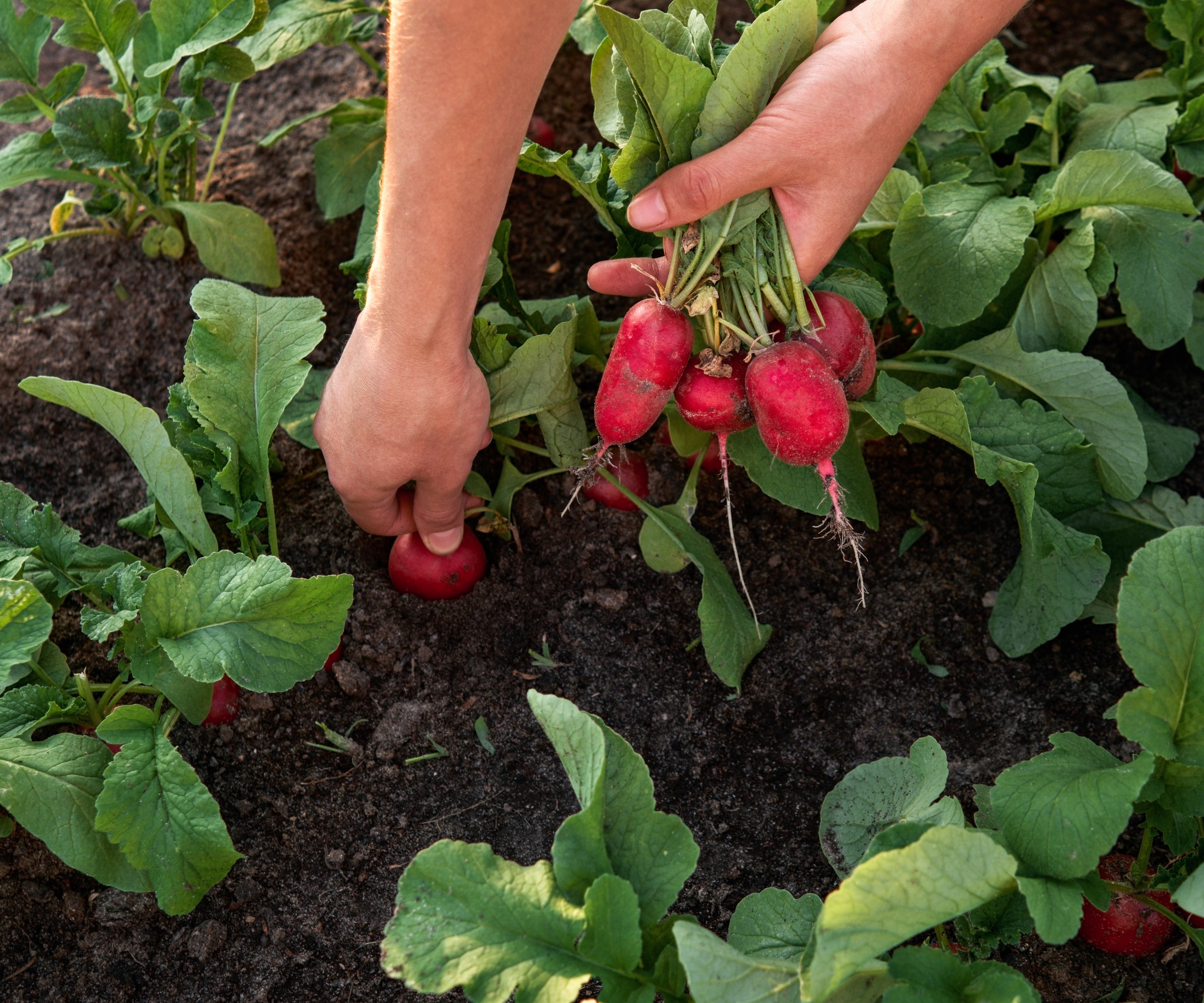
Radishes are such fast-growing vegetables that it is pointless to plant radishes as transplants. Some varieties can go from sowing to harvesting in under 30 days, which can be a waste of time and compost to sow them indoors and then plant out. As they develop quickly, you are also highly likely to disturb the root when transplanting them outside.
Radishes can germinate once the soil temperature reaches 50˚F and can be sown from early spring to fall. Successional sowings are recommended when growing radishes for continual harvests of peppery roots.
Sow radishes in shallow drills a half-inch deep and thin the seedlings to 1-2 inches apart as they appear. They germinate quickly and grow rapidly in moist soil, so start harvesting radishes once they reach an inch or so in diameter.
4. Turnips
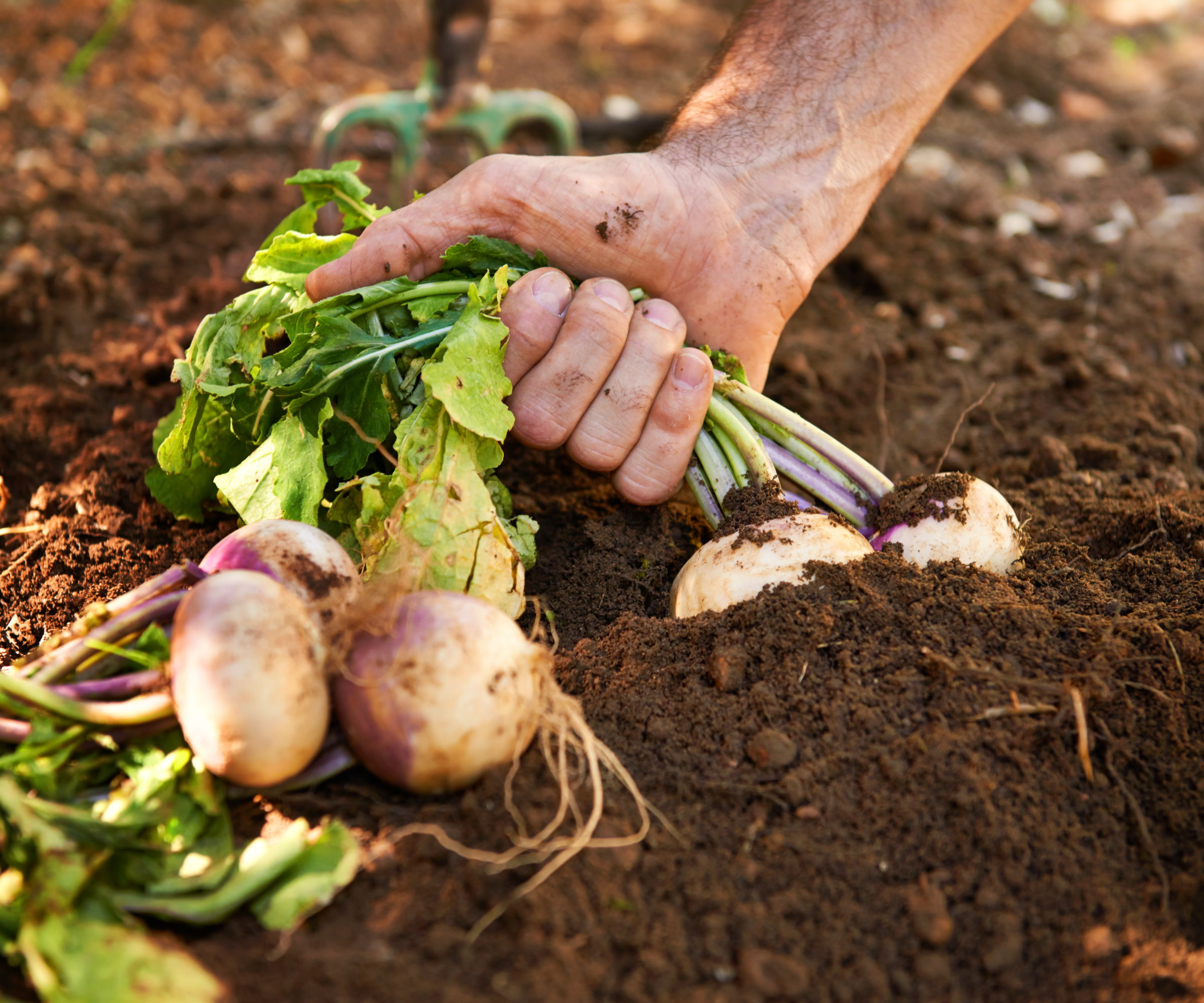
Turnips are another fast-growing vegetable that can be planted throughout the year, from spring to late summer. Like other crops on this list, turnips quickly develop a taproot that can be disturbed if you transplant seedlings. Direct sowing means healthier and larger turnips.
To grow turnips, thinly sow seeds into half-inch drills made in the soil and keep rows 12-18 inches apart. Keep the soil consistently moist but not waterlogged, and thin seedlings to six inches apart.
Turnips are often confused with rutabaga, but the latter produces larger bulbs with a sweeter flavor. While there are differences between them, direct sowing is also preferable to transplants when growing rutabaga.
5. Beets
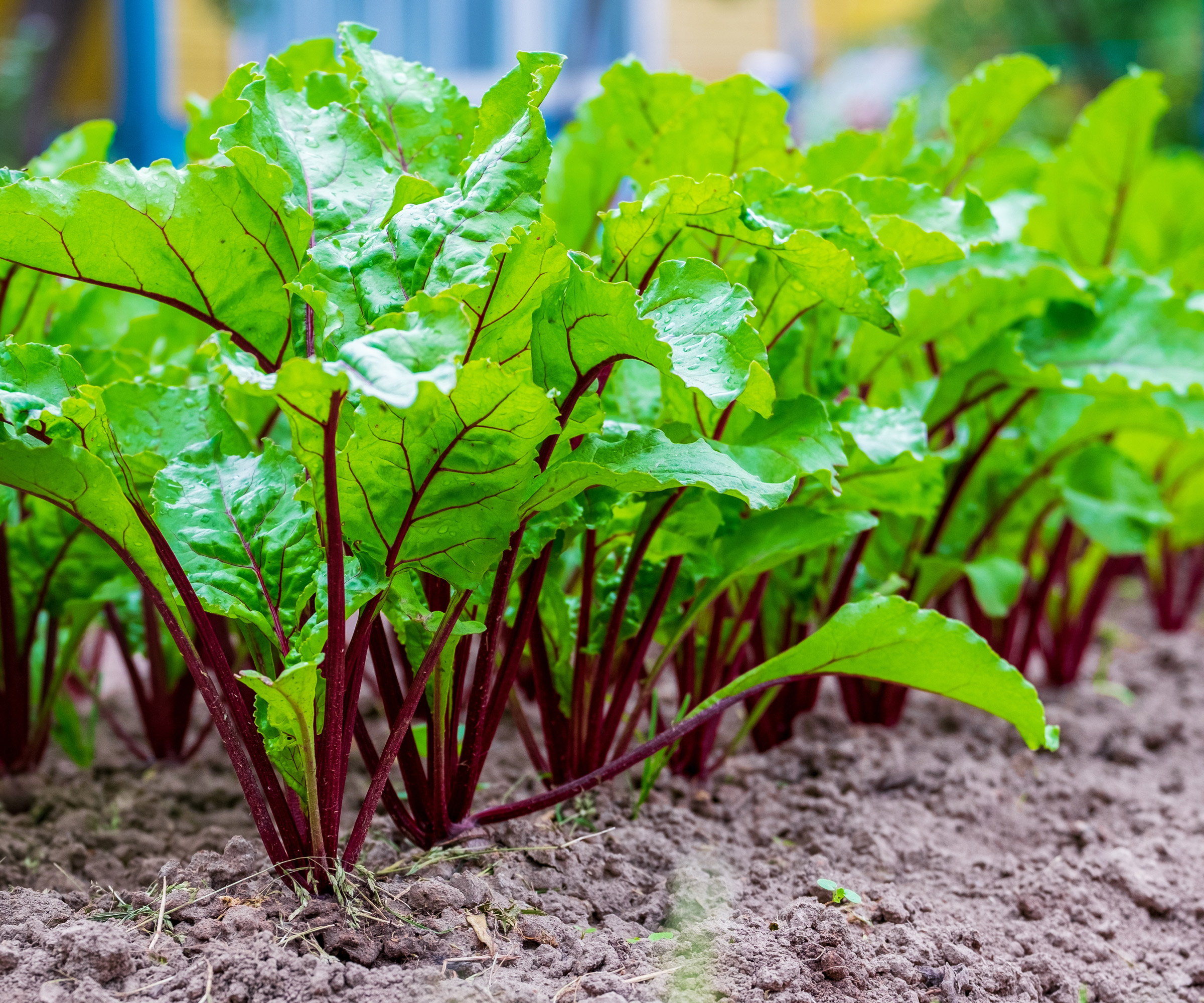
To be transparent, I have successfully grown beets both as transplants and by direct sowing. I used to sow them into modules indoors and plant outside, but over the years have found it quicker and easier to direct sow them. I have never had any germination issues with planting beets directly outdoors and will continue to do so, you just need to be more diligent with thinning.
Sow seeds an inch deep from mid-spring to summer, and avoid sowing too thickly. The beet seeds in packets are clusters of seeds, not individual ones. Over-sowing would be a beet-growing mistake that leaves you facing a lot of seedlings to thin.
FAQs
Do beans like to be transplanted?
Beans can suffer from transplant shock, so many growers will direct sow them. However, depending on your climate, there are benefits to starting them indoors to get ahead on the season. Also, growing beans as transplants reduces the risk of pests nibbling on seedlings.
Beans can be successfully grown as transplants - I have frequently cultivated them as transplants. Using biodegradable pots can reduce root disturbance, and transplanting them outdoors at the right time is key. This is because beans quickly develop roots and need planting before roots penetrate the soil in their pot.
Some varieties of beans are more suitable for transplanting, such as fava beans, French beans, and runner beans, so do your research if you intend to take that route.
Should broccoli be started indoors?
I have always found that transplants are a great way to grow broccoli. I have often started broccoli as transplants, while I have also bought young seedlings to add to my vegetable garden at home.
Plant broccoli seeds in spring into large modules or individual pots - they are ideal vegetables to plant in April or successively through till late summer. Transplant the young broccoli into the garden three or four weeks later, after a period of hardening off seedlings.
Starting vegetable seeds indoors at the right time is crucial if you opt to grow transplants. It may be tempting to go early, though it can do your seedlings no favors.
Planting them too early will be a seed sowing mistake. You need additional heat and light during the colder months to prevent leggy seedlings, and this can lead to weak and stressed plants if you fail to give seedlings adequate amounts of either.
Additionally, vegetable plants stuck in small pots for too long, waiting for the frosts to pass and their opportunity to go outside, will end up root-bound and won’t perform well when finally planted.

Drew has worked as a writer since 2008 and was also a professional gardener for many years. As a trained horticulturist, he worked in prestigious historic gardens, including Hanbury Hall and the world-famous Hidcote Manor Garden. He also spent time as a specialist kitchen gardener at Soho Farmhouse and Netherby Hall, where he grew vegetables, fruit, herbs, and cut flowers for restaurants. Drew has written for numerous print and online publications and is an allotment holder and garden blogger. He is shortlisted for the Digital Gardening Writer of the Year at the 2025 Garden Media Guild Awards.
